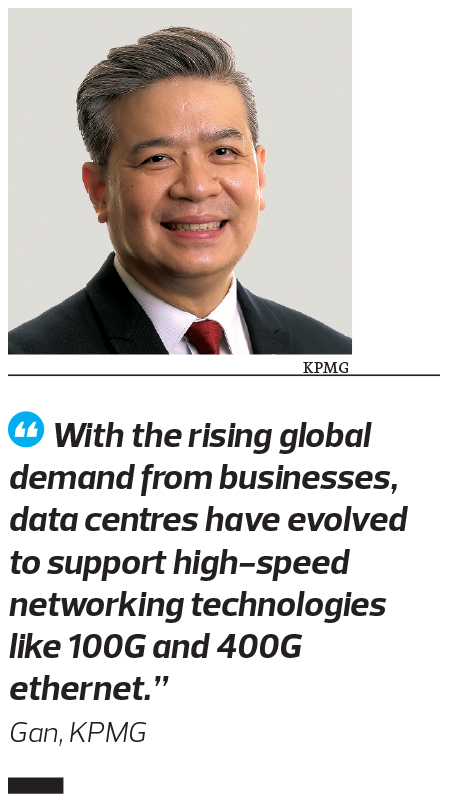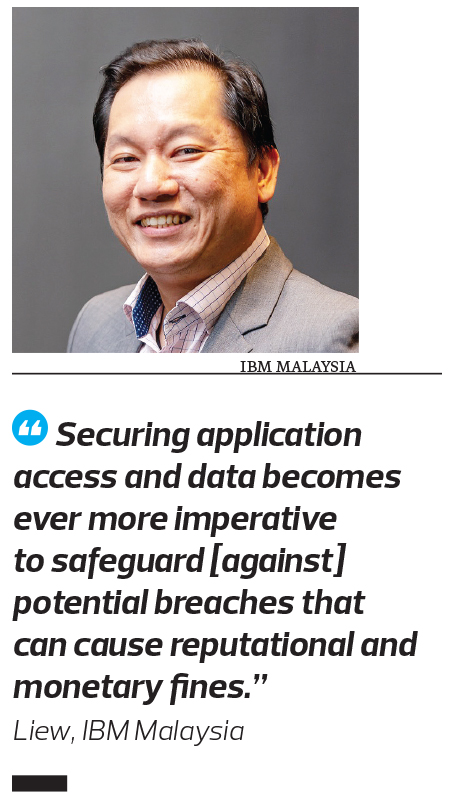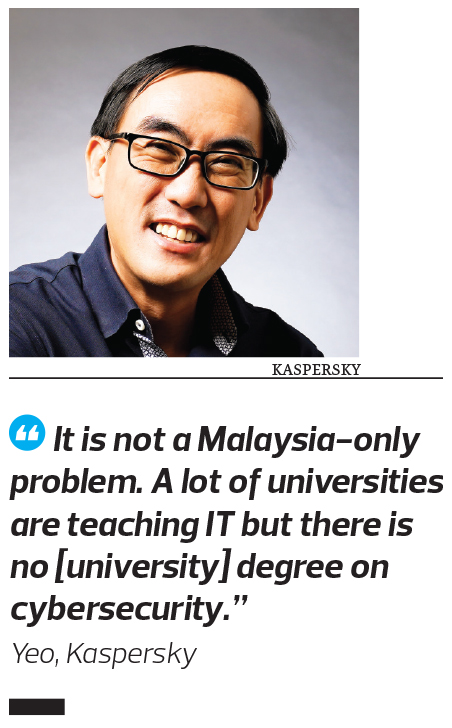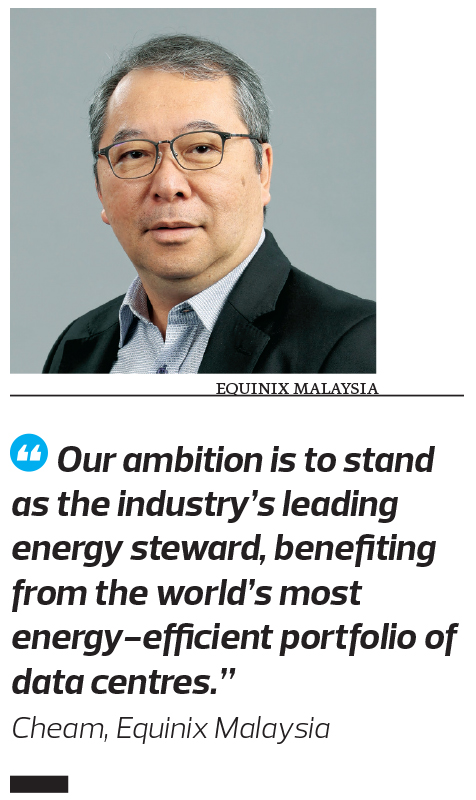
This article first appeared in Digital Edge, The Edge Malaysia Weekly on December 30, 2024 - January 12, 2025
The expansion of data centres is fuelling growth in related industries such as cybersecurity, network infrastructure and IT services. To meet the challenges of managing sensitive data at scale, IT providers are introducing specialised solutions, including cloud migration, data optimisation and managed services.
“These services are tailored to help businesses manage large-scale operations and data sets more effectively. As a result of the increased demand for data storage and processing capabilities, there has been a rise in competition across ancillary industries, driving their growth,” says Alvin Gan, partner and head of technology consulting at consulting firm, KPMG Malaysia.
The growth of data centres, including hyperscale and colocation facilities, requires security tools driven by artificial intelligence (AI) and managed cybersecurity services to safeguard critical data assets.
“This, in turn, will foster the growth of cybersecurity companies, offering services such as threat detection, data encryption and vulnerability assessments,” says Cheam Tat Inn, managing director at Equinix Malaysia.
Since data centres require reliable and high-speed network infrastructure to ensure seamless connectivity and data transfer, the expansion of data centres in Malaysia will drive the demand for network infrastructure development. This includes high-speed fibre optics, 5G technology and interconnection services.
“This presents opportunities for network infrastructure providers to offer their services and solutions to support the growing data centre ecosystem,” says Cheam.
The growth of data centres also opens up multiple avenues for the development of advanced solutions in areas such as AI, cloud computing and Internet of Things (IoT).
IBM believes that hybrid cloud and AI are the dominant forces driving digital transformation. Scalable, secure and flexible cloud-based IT infrastructure is essential for companies adapting to the digital era.
“Hybrid cloud allows organisations to achieve greater flexibility by seamlessly integrating on-premises IT and data centres and multiple types of clouds such as public cloud [and] private cloud,” says Eddy Liew, chief technology officer of IT and business solution provider, IBM Malaysia.
Hybrid cloud provides orchestration, management and application portability among the clouds to create a single, flexible, optimal cloud infrastructure for running computing workloads. And AI complements this by unlocking the power of data, automating processes and enabling more intelligent decision-making.
“As businesses scale, the demand for hybrid cloud strategies has significantly grown, with 63% of organisations planning to implement them by 2025. This shift supports operations across sectors and regions,” says KPMG’s Gan.
However, a mindset shift is required among sector leaders in order to fully embrace cloud computing technologies, particularly in accepting data storage and consumption from cloud infrastructure managed by dedicated service providers, he adds.
In these advanced solutions, low latency and cross-border connectivity is crucial for businesses and also market growth for different industries such as fintech, gaming and entertainment, and also micro, small and medium enterprises (MSMEs) in scaling their operations to advanced cloud and AI capabilities.
“With the rising global demand from businesses, data centres have evolved to support high-speed networking technologies like 100G and 400G ethernet. These advancements focus on enabling greater bandwidth, lower latency and seamless interconnectivity across regions and clouds,” says Gan.
This enhanced connectivity supports the rapid transfer of large volumes of data, ensuring businesses can operate at scale and speed in today’s digital-first world.
“In the case of 5G, data centres can play a key role in network slicing, where virtualised networks ensure low-latency performance. Localised data processing is also enabled by deploying smaller edge data centres closer to end users, signifying efforts in reducing latency and facilitating real-time decision-making for applications,” says Gan.
For example, in the healthcare sector, edge data centres support continuous patient monitoring, large file medical imaging files and personalised treatments, leveraging rapid data processing.
“IT service providers are witnessing a surge in demand for managed services, cloud migration support and IT consulting, as businesses tackle the complexities of scaling and maintaining modern digital ecosystems,” says Equinix’s Cheam.
However, key hurdles remain, including cyber resilience, energy and sustainability concerns, talent retention and cloud technology adoption.
Fortifying cybersecurity
The heightened dependency on data centres for storing and processing sensitive data across organisations and borders has made them prime targets for cybercriminals.
“To enhance cybersecurity resilience, business leaders are taking comprehensive measures that address people, processes, data, technology and regulatory compliance. The focus is largely on building the cybersecurity capabilities required to manage complex operational environments,” says KPMG’s Gan.
As data centres become critical to highly regulated sectors like finance service industries, safeguarding against cyberattacks and breaches is a persistent challenge.
“Securing application access and data becomes ever more imperative to safeguard [against] potential breaches that can cause reputational and monetary fines,” says IBM’s Liew.
The good news is that technology and cyber leaders are leveraging advanced tools to create innovative cybersecurity solutions, such as automated security operations, and extended detection and response.
“Recently, what you will see in cybersecurity vendors is that they are pulling every layer together [to have full visibility of the system] because hackers are getting more sophisticated and they don’t just attack one layer,” says Yeo Siang Tiong, general manager for Southeast Asia and Asia emerging countries at Kaspersky.
More organisations are also transitioning to cloud-based solutions, opting to store their data in data centres, and cybersecurity measures of data centre providers are crucial. “As you have more data, the corresponding security of it is important,” says Yeo.
As data centres evolve into comprehensive service providers that offer infrastructure, software and connectivity, the demand for robust security solutions will naturally rise. The request for advanced technology and expertise will be necessary to safeguard these innovative services.
“Malaysia has a good start with a good pool of expertise but it is still not enough. It is not a Malaysia-only problem. A lot of universities are teaching IT but there is no [university] degree on cybersecurity,” says Yeo.
“One thing to also note is that data centres are not included in the [Malaysian] Cybersecurity Act 2024. So, the next train of thought moving forward is holding data centre infrastructure players or service providers or cloud service providers responsible for some basic security.”
With the aggressive growth of data centres in Malaysia, Yeo thinks that a digital infrastructure act, similar to that in Singapore, will help protect the country’s lead in the data centre business.
Singapore’s planned Digital Infrastructure Act was suggested following cyber outage incidents and is expected to cover a wider range of risks encountered by digital service providers. The act will require regulated entities, including telecommunication service providers, cloud service providers and data centre operators, to report significant outages and cyber incidents to the authorities.
Addressing these issues requires public-private collaboration, backed by robust policies and targeted capability-building initiatives.
Moreover, as digital infrastructure becomes increasingly central to the modern world, the growing demand for data centres will inevitably drive higher power and water consumption.
“It is crucial for the industry to prioritise the design, construction and operation of data centres in a sustainable manner,” says Equinix’s Cheam.
While efforts are underway to balance innovation with environmental responsibility, transparent sustainability reporting is essential. According to International Data Corporation, global data centre energy consumption reached 352 TWh in 2023 and is projected to grow at a compound annual growth rate (CAGR) of 19.5% to 857 TWh by 2028.
Environmental sustainability is central to Equinix’s operations. In 2015, it became the first in the industry to commit to 100% renewable energy, and in June 2021, it set a goal to achieve climate neutrality by 2030, aligned with science-based targets (SBTs) across Scope 1, 2, and 3 emissions.
Scope 1 covers direct emissions, Scope 2 includes indirect emissions from purchased energy, and Scope 3 encompasses all other indirect emissions across the value chain.
“Equinix strives to improve operation efficiency at its more than 260 data centres across the globe. In 2023, we invested US$77.5 million in energy-efficiency projects globally, reducing annual energy consumption by 66,862 MWh. From 2022 to 2023, we improved our PUE (power usage effectiveness) by 8.8%,” says Cheam.
Equinix actively monitors water usage effectiveness (WUE), sets reduction targets and identifies opportunities to enhance facility efficiency globally. In 2023, it achieved a WUE of 1.07 across its global data centre portfolio and 1.63 for centres using evaporative cooling.
“Our ambition is to stand as the industry’s leading energy steward, benefiting from the world’s most energy-efficient portfolio of data centres,” says Cheam.
Moving forward
A notable trend accompanying the rise of data centres is the growth of edge computing and AI, driven by the increasing need for real-time data processing. This shift is particularly transformative for industries like telecommunications, manufacturing and healthcare.
According to IBM’s Liew, 2025 will be the year for AI initiatives, where AI-powered automation will reach a tipping point from being a “nice-to-have” to a requirement.
“Simply put, automation is needed to solve AI’s complexity. Organisations can now confidently advance and scale their AI initiatives using automation, moving from spending time managing and maintaining AI applications and IT environments to proactively detecting and resolving issues. Automating these tasks will be critical for competitive advantage,” says IBM’s Liew.
At the same time, the integration of AI and machine learning (ML) is accelerating the transformation of data centres. AI is enabling automation, energy optimisation and predictive maintenance, leading to improved efficiency, reduced operational costs and enhanced security within data centres.
“The rise of private AI and the ‘model-to-the-data’ approach is set to transform sectors by enabling enterprises to securely train large language models (LLMs) on proprietary data,” says Cheam.
Quantum cryptography solutions like quantum keys-as-a-service (QaaS) will play a significant role in enhancing cybersecurity across private enterprise networks. Furthermore, edge computing will also become increasingly important as Malaysia adapts to data sovereignty laws, IoT proliferation and the demand for real-time applications, says Cheam. QaaS is an offering that combines the potential of quantum computing products, platforms and solutions with the simplicity of cloud computing.
“As data centres embrace these technological advancements, they are addressing growing concerns on sustainability. The push towards energy-efficient designs and the transition to renewable energy sources is reshaping the industry,” says Gan.
This focus on sustainability is driving significant changes in sectors such as renewable energy, energy storage and construction, especially as businesses strive to meet environmental goals and comply with stringent regulations. As a result, this signifies a clear opportunity for growth in the green energy space.
These advancements are also driving a growing demand for specialised technology services in areas like data management, cloud solutions and operational support.
“This, in turn, creates opportunities for the growth of ancillary industries such as cybersecurity and modernised technology infrastructure, which are essential for supporting business operations and ensuring the resilience of the evolving digital landscape,” says Gan.
Save by subscribing to us for your print and/or digital copy.
P/S: The Edge is also available on Apple's App Store and Android's Google Play.




